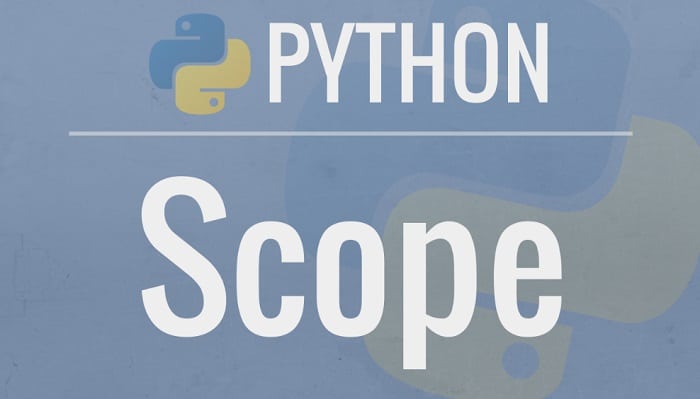Python is the most talked about programming language in today’s world. Guido van Rossum, in the year 1991, created this language. Python is a high-level dynamic programming language for scientific computing. It is easy to learn, can run on any platform, is free to use, can execute line by line, has significantly rich library support, and is extensible and robust.
It is an object-oriented programming preferably designed for fast prototyping of complex applications. Many large multinational companies, including Google, NASA, YouTube, BitTorrent, Amazon, Microsoft, and others, use this programming language.

Let’s see why one should learn Python for programming.
See also: Python Basics: Understanding Identifiers In Python
Table of Contents
Why Learn Python Programming?
Python programming has widespread usage in Natural language, Artificial Intelligence, and other fields of Computer Science. It is helpful for the development of web and software, mathematics, and system scripting. Python is commonly beneficial in Graphic design, image processing, scientific computing, and games.
On a brighter note, it is the most demanded language today, with substantial job opportunities for candidates knowing this programming language.
Characteristics
- It provides rich data types and is much easier syntax than other programming language.
- It is independent of the platform with access to the operating system.
- It is more flexible than a different programming language.
- It includes basic text manipulation.
- Users can compile Python to byte-code in case of building more extensive applications.
- There is no compilation step, so editing, debugging, and testing are fast.
Python Vs. Other Programming Languages
Python is among the most popular languages of all the other programming languages. Programmers use a total of six languages for developing web and desktop applications. To pick the correct terminology for the projects, one must compare Python with different languages, i.e., JAVA, Perl, TCL, RUBY, PHP, and C++.

Python Vs. JAVA
- Python is, however, expected to run slower than JAVA, but compared to JAVA, it takes less time to develop.
- Python is shorter than JAVA programs because of its high-level data types and dynamic typing.
Python Vs. Perl
People consider Python and Perl the same in many ways; however, Perl supports tasks like generating a report, scanning a file, and many more. On the other hand, Python supports programming procedure like structuring data design and OOPs programming for those programmers who makes language to clear code.
Read also: Optimizing Solutions: Linear Programming In Python
Tcl Vs. Python
- Tcl is a freestanding programming language. It is considered weak in data structure comparatively.
- As compared to Python, it is slower in performing code.
Python Vs. PHP
- PHP has syntax from C/C++ and Perl; however, Python has easier and clear read code.
- PHP has a class-based SPL, while in Python, classes are used substantially in the standard library.
- Exception handling is used in Python, not PHP while reporting errors.
- PHP has built-in development features; in Python, it is provided by an add-on.
RUBY Vs. Python
- Ruby has poor data structures, namespace, internal functions, and module usage compared to Python.
- Ruby does not support multiple inheritances, while Python does.
- Python uses the white space to close its scopes while ‘’end” or ‘’}’’ is ued in RUBY.
- Python is used for scientific and academic programming, and RUBY is for functional programming and development of the web.
Python Vs. C++
- Programming languages like C or C++ are larger than Python code
- C++ is statically typed, while Python is a dynamically typed programming language.
Python Vs. JavaScript
JavaScript uses blocks of code and brackets, while Python, on the other hand, uses whitespace and indentation.
Scope Of Python
Today Python is the most promising career in industry and technologies. More and More opportunities for candidates are increasing in the world today. Top multinational companies are in the Python language due to its more shortcodes and readability capacity. Candidates interested in Python are growing daily due to its progressive ideas and success.

IT companies are still expecting more developers for their respective companies due to their competitive advantage. Candidates before do not prefer Python to be their career, but the demand for Python developers has increased.
The most trending job roles are data science and data analysis, with promising pay in large companies. Some job profiles are Software developer, DevOps Engineer, Research Analyst, and Data Analyst/Scientist.
One must have a strong base in programming; also, as a fresher, one can earn around 4 to 5 lakh per annum.
See also: Game Development In Python: A Look At Python Game Engines
FAQS
Can I use Python to perform scientific computing?
Yes, one can use Python to perform scientific computing. In fact, Python has become a standard for scientific computing and, growing to be extensively used . Python is relatively easy to learn as well as use. Additionally, it is standardized and usable across multiple platforms like IOS, Windows and Linux. Python also allows for easy inter-operation of tools used in scientific research.
What is the Python package we need to use for scientific computing?
The Python package that researchers use for scientific computing is NumPy. NumPy generally allows for the use for large, multi-dimensional arrays and also matrices. It also provides an extensive library of high-level mathematical functions researchers can use to compute and analyze data. NumPy, therefore, makes scientific computing as easy as possible on Python.
What is the best language option for scientific computing?
Python generally ranks as the best programming language for scientific computing. Python. This is mainly because Python is a potent tool you can easily use. Python helps make storing, computing, and analyzing data easier. Its popularity stems from the fact that it is easy to use.
Do all data scientists use Python?
Yes, generally, most, if not all, data scientists use Python. Data scientists need to use and learn at least one of the popular programming languages, such as Python, Java, or C++. Among these, scientists generally prefer Python for data computing as it is easy to use and has extensive libraries.
What are the important Python skills a data scientist requires?
The five most important Python skills that a data scientist requires are arguably manipulation of data as well as data cleaning, data visualization, and a knowledge of working with databases. A data scientist also requires a mastery of web scraping and machine learning. It generally takes practice to master all these skills, and it may take a few months to a few years.
Conclusion
In the commercial world, Python is a real-world programming language for scientific computing containing libraries and is easy and quick to learn. It is the fastest-growing language. One can also become a part of the trending technologies by choosing Python as a career path. If we want to deliver exceptional results, we must learn Python.